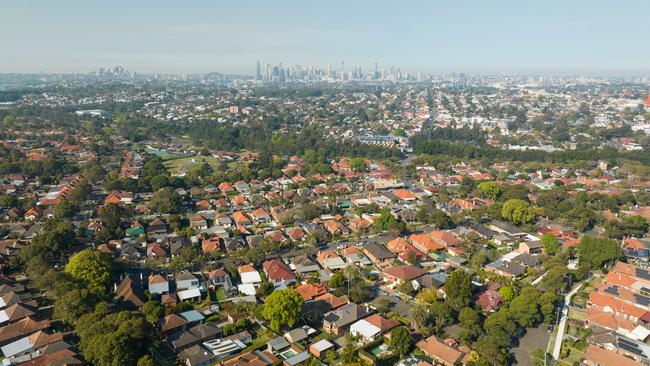Home prices hit record high as rate outlook and population growth fuel demand
Property prices hit a record high in March as strong population growth and a tight rental market lifts buying demand at a time when dwellings approvals dwindle at a decade low.

National home prices reached a record high in March and are set to rise further in the coming months as strong population growth and a tight rental market combined with a decade-low construction rate creates a supply and demand imbalance.
The PropTrack Home Price Index showed that national dwelling prices climbed 0.34 per cent to a new peak in March, lifting prices up 1.57 per cent for the quarter and nearly 7 per cent more than March 2023.
Dwelling prices in capital cities increased by 0.4 per cent in the month, with homes in all capital cities increasing in price since February except for Hobart, which slid 0.03 per cent.
Strong house price growth has also lifted the total value of all Australia’s residential dwellings to a record high of $10.4 trillion, a 60 per cent increase in the past five years, according to the latest Australian Bureau of Statistics for the December quarter.
PropTrack economist Eleanor Creagh said despite more homes hitting the market this year, demand has absorbed the surge leading to further price increases amid the prospect that the Reserve Bank has finished lifting rates and its next move could be to cut rates from 4.35 per cent late this year.
“It’s clear that despite that higher interest rate environment market conditions have improved and the current stability is lifting confidence, and the prospect that the next move for rates will be lower is providing a positive tailwind for housing demand,” she said.
Perth saw the strongest year-on-year gains on record dating back to 2010, with prices up 0.99 per cent in March and 18.62 per cent in the past year to $660,000. Adelaide dwelling values increase 0.3 per cent in the month and 13.47 per cent year-on-year to $723,000.
Ms Creagh said Perth and Adelaide had seen strong growth because prices were cheaper than elsewhere, but also because of a chronic shortage of homes in both the residential and rental markets.

“Stock availability in Perth and Adelaide is well below pre-pandemic averages by more than 30 per cent. That is promoting a seller’s market in both those cities and lifting prices at a strong pace,” she said.
“Perth in particular continues to see strong population growth, and has a rental vacancy rate of below one per cent so housing shortages in the market to rent are also playing into the strength.”
The country’s two largest cities of Sydney and Melbourne registered growth despite a sharp jump in the number of new property listings for the quarter. Sydney dwelling values lifted 0.4 per cent in March and 1.79 per cent for the quarter to a record $1.07m, while Melbourne rose 0.27 per cent to $802,000, but below its 2022 peak.
Melbourne was narrowly ahead of Brisbane, which lifted 0.4 per cent in March to $801,000, taking total growth since the pandemic past 63 per cent — more than anywhere else in Australia.
Housing has become increasingly unaffordable amid a record increase in the country’s population, which lifted 2.5 per cent to 26.8 million in the year to September, driven by a 548,800 uplift in immigration.
This comes as the number of dwellings approved for construction remained at its lowest level since January 2013 and 33 per cent lower since the middle of the pandemic amid a sharp rise in construction costs.
Ms Creagh said the imbalance between supply and demand is likely to further offset the impact of affordability constraints and a slowing economy, and expected that any rate cuts would accelerate price growth.
The economist added that while immigration rates were expected to moderate from record levels this year, the number of homes being built was well short of the Albanese government’s 1.2 million housing target, which would help to make dwellings more expensive to buy.
“Housing demand is being buoyed by population growth, tight rental markets, resilient labour market conditions and home equity gains,” she said.
“With a slowdown in the completion of new builds not going away or those housing supply constraints remaining front and centre, it’s likely that demand supply imbalance is going to continue,” she said.




To join the conversation, please log in. Don't have an account? Register
Join the conversation, you are commenting as Logout